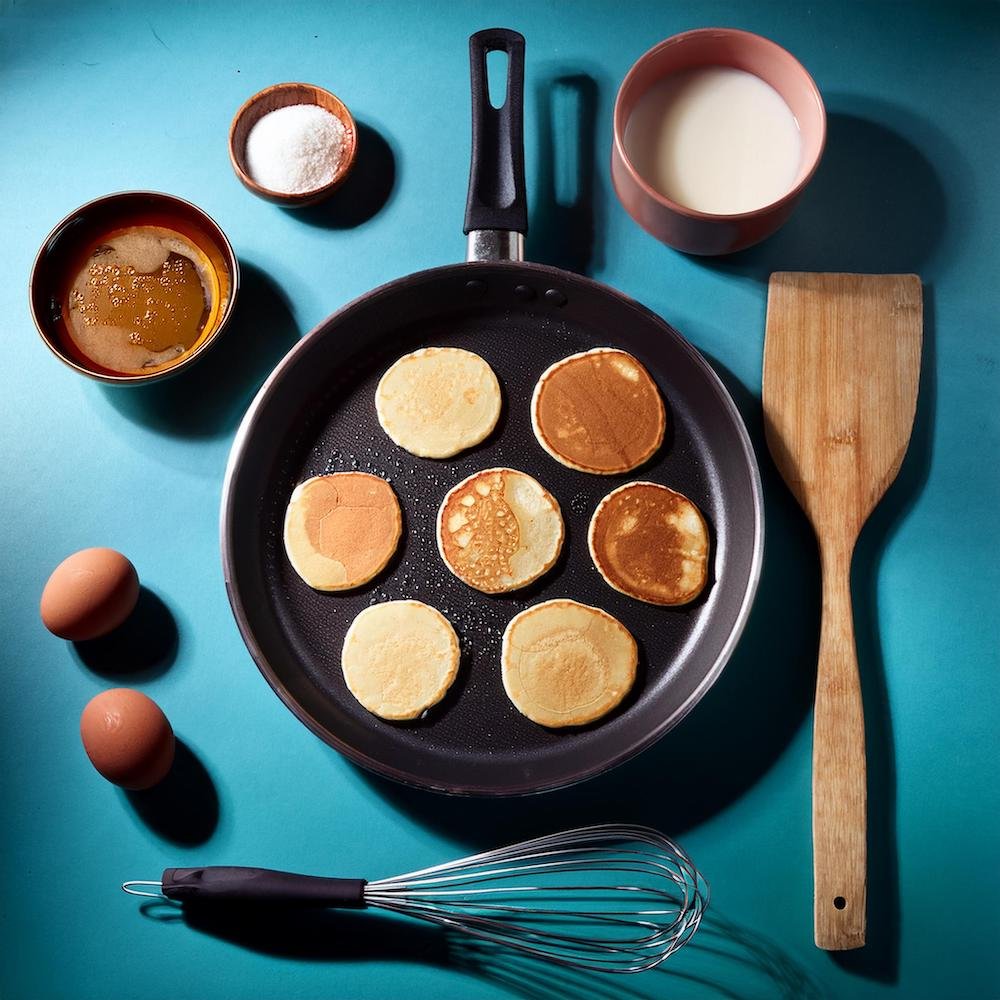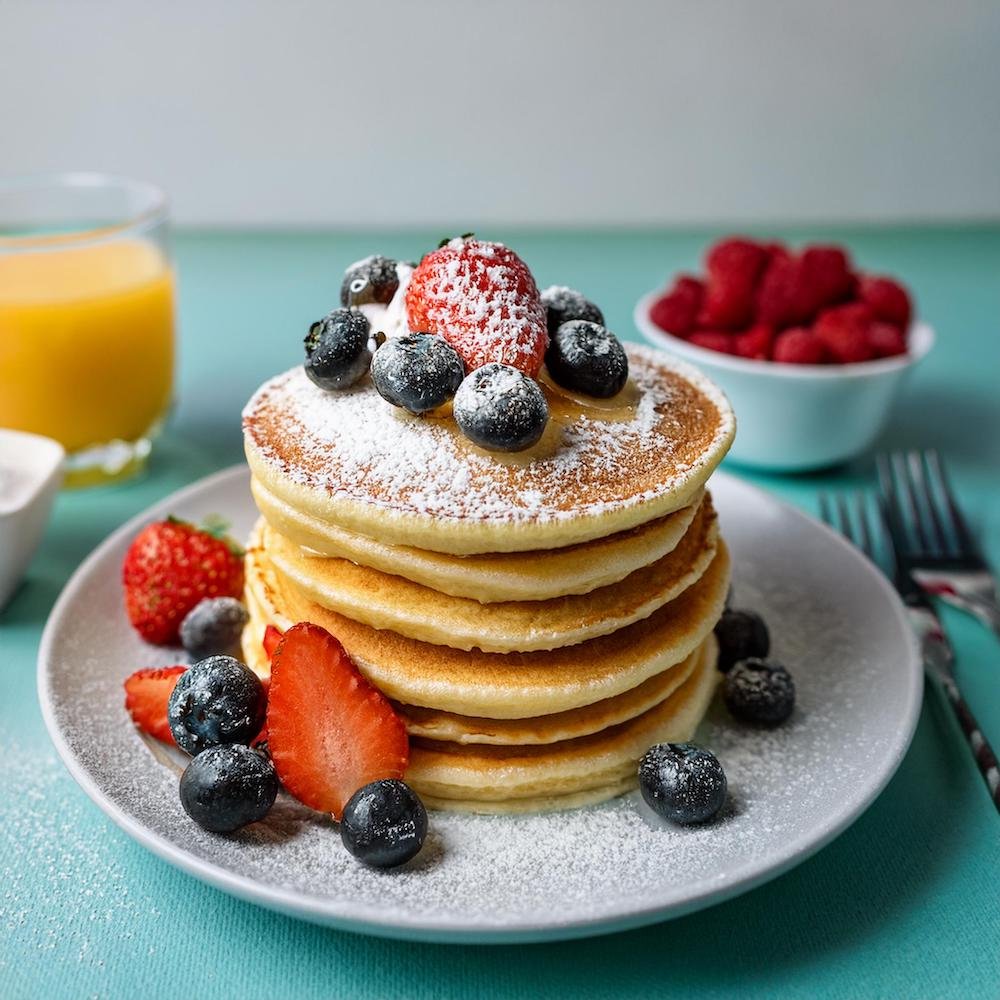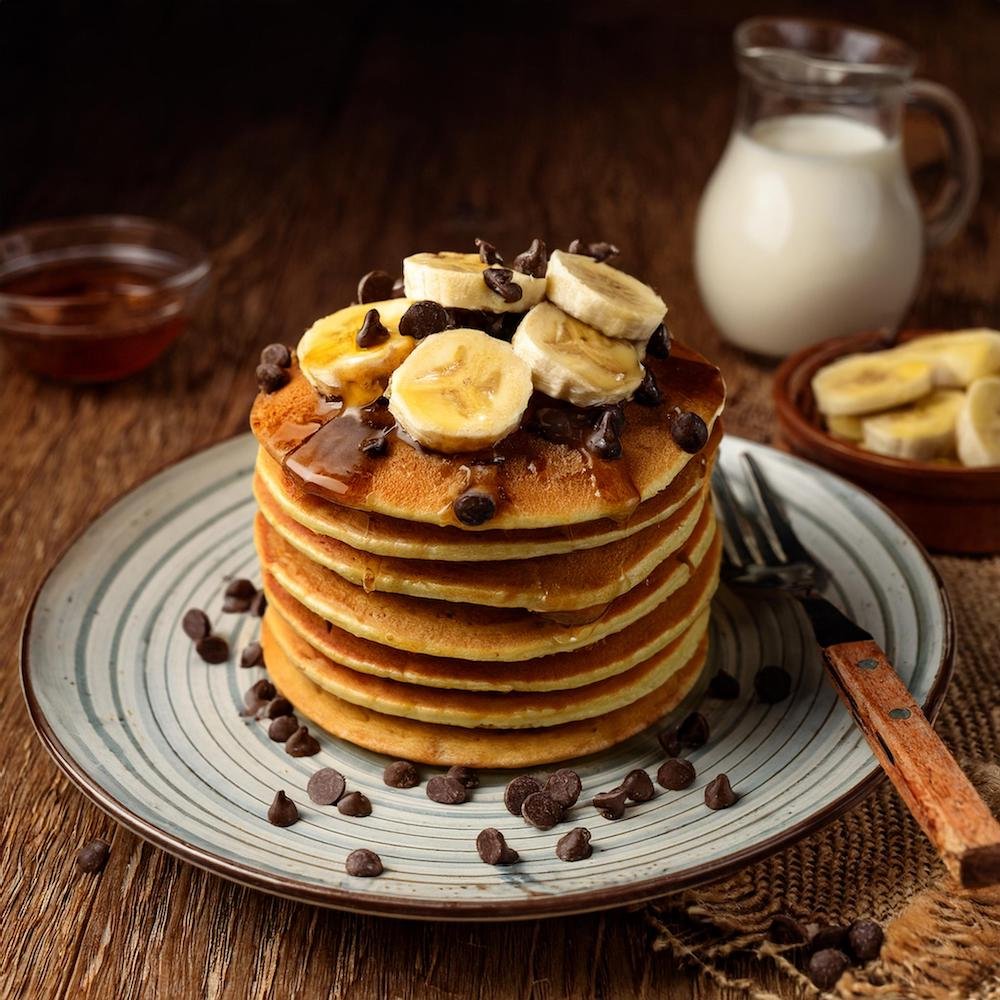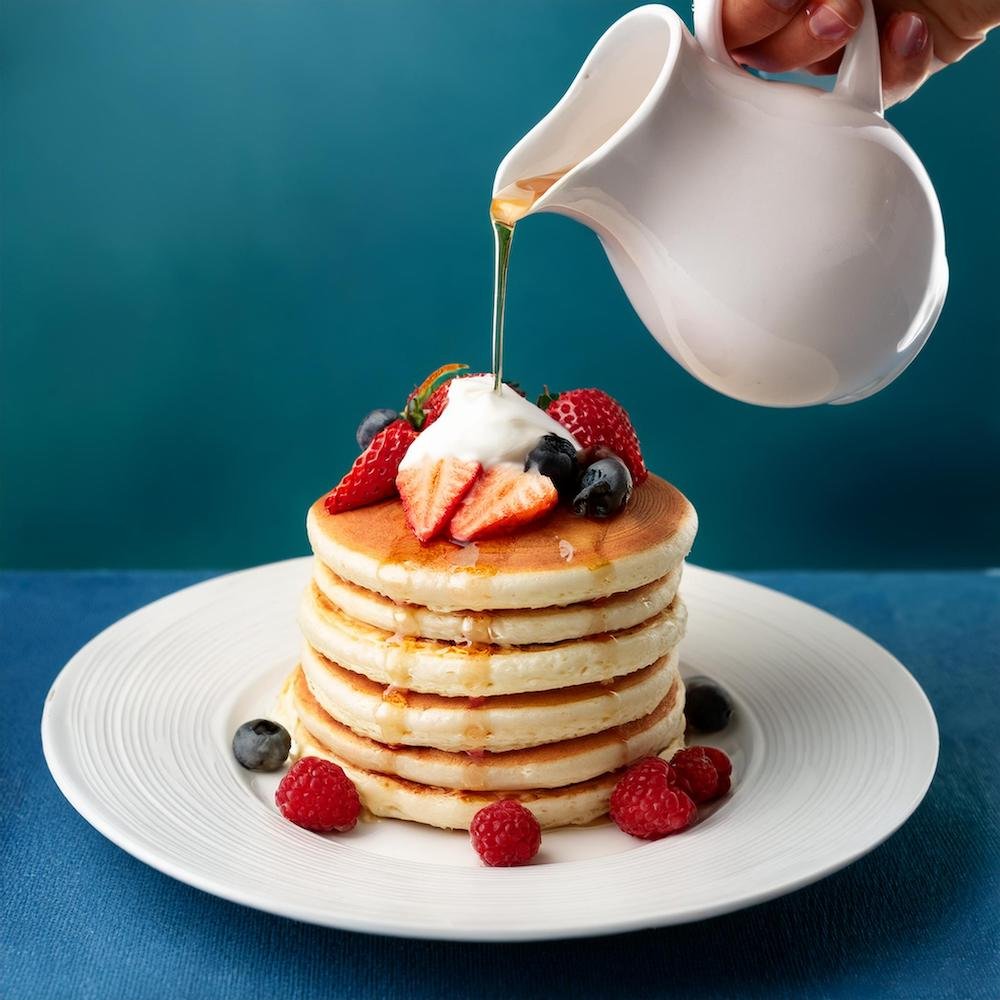Pancakes are a beloved breakfast staple, and the ingredients you use can greatly affect their taste and texture. One question that often arises is, “Can I add cream to pancake batter?” The answer is a resounding yes! Adding cream to your pancake batter can transform ordinary pancakes into rich, velvety delights.
Whether you’re looking to elevate your brunch game or simply experiment with flavors, incorporating cream is an easy way to make pancakes softer, more flavorful, and indulgent. In this guide, we’ll explore how cream affects pancake batter, the best types of cream to use, and tips for achieving perfect results.
How Cream Affects Pancake Batter
Adding cream to pancake batter changes the texture, flavor, and overall quality of the pancakes in several ways.
1. Impact on Texture
Richer and Softer Pancakes
- The higher fat content in cream makes pancakes more tender and moist compared to those made with milk or water.
- Cream gives the batter a silkier consistency, resulting in pancakes with a melt-in-your-mouth texture.
Fluffiness
- While cream enhances softness, its heaviness might slightly reduce the fluffiness unless balanced with leavening agents like baking powder or soda.
2. Impact on Flavor
Enhanced Creaminess
- Cream imparts a velvety richness to the batter, making the pancakes taste more indulgent.
Subtle Sweetness
- Some creams, such as sweetened or heavy cream, add a mild sweetness that complements pancake toppings like syrup and fruit.
3. Differences Compared to Milk or Buttermilk
Milk vs. Cream
- Milk: Lighter and creates fluffier pancakes.
- Cream: Heavier, leading to richer and denser pancakes.
Buttermilk vs. Cream
- Buttermilk: Adds tanginess and reacts with baking soda for extra rise.
- Cream: Lacks acidity, so you may need additional leavening to ensure the pancakes rise properly.
Pro Tip: Balance the Batter
- Use slightly less cream than you would milk to avoid making the batter too heavy. If using cream, consider increasing the baking powder or soda slightly for extra lift.
Types of Cream You Can Use in Pancake Batter

Not all creams are the same, and the type you choose can influence your pancakes’ texture and flavor. Here are the most common types of cream and how they perform in pancake batter.
1. Heavy Cream
Why Use It?
- High Fat Content: Heavy cream contains around 36–40% fat, making it ideal for creating rich and tender pancakes.
- Best For: Indulgent pancakes that pair well with sweet toppings like whipped cream, fruit, or chocolate syrup.
Tips for Use
- Use slightly less heavy cream than milk in the recipe, as its thickness can make the batter too dense.
- Consider thinning with water if a lighter texture is desired.
2. Whipping Cream
Why Use It?
- Moderate Fat Content: Contains about 30–36% fat, slightly less than heavy cream but still rich enough to enhance the batter.
- Best For: Pancakes with a creamy texture that aren’t overly heavy.
Tips for Use
- Whipping cream can be substituted for milk in equal amounts, but like heavy cream, it may benefit from slight thinning.
3. Light Cream
Why Use It?
- Lower Fat Content: With 18–30% fat, light cream strikes a balance between richness and lightness.
- Best For: Pancakes that maintain fluffiness while being soft and creamy.
Tips for Use
- Light cream is an excellent option if you want the benefits of cream without sacrificing fluffiness. No thinning is typically required.
4. Sweetened Cream
Why Use It?
- Added Flavor: Pre-sweetened creams can enhance the sweetness of the batter, reducing the need for additional sugar.
- Best For: Dessert-style pancakes or those paired with minimal toppings.
Tips for Use
- Reduce or omit sugar in the recipe to avoid overly sweet pancakes.
5. Dairy-Free Cream Alternatives
5.1. Coconut Cream
- Why Use It?: Rich and creamy with a subtle coconut flavor, it’s perfect for vegan or tropical-inspired pancakes.
- Best For: Coconut-flavored pancakes or those paired with fruits like mango or pineapple.
- Tip: Stir well before using, as coconut cream can separate in the can.
5.2. Cashew Cream
- Why Use It?: Smooth and creamy with a neutral flavor, cashew cream is a versatile dairy-free alternative.
- Best For: Neutral pancakes that adapt well to both sweet and savory toppings.
5.3. Almond Cream or Oat Cream
- Why Use It?: Lighter than coconut cream but still rich enough to improve pancake texture.
- Best For: Pancakes with a subtle nutty or earthy flavor.
Pro Tip: Match the Cream to Your Desired Pancake Style
- For Rich and Indulgent Pancakes: Use heavy or whipping cream.
- For Balanced Pancakes: Opt for light cream.
- For Vegan Pancakes: Coconut or cashew cream are great options.
How to Add Cream to Pancake Batter

Incorporating cream into pancake batter requires small adjustments to ensure the right consistency and texture. Here’s how to successfully use cream in your recipe.
1. Adjusting the Recipe for Cream’s Higher Fat Content
Why Adjustments Are Necessary
- Cream is thicker and richer than milk, which can make the batter dense if not balanced correctly.
How to Adjust
- Use Less Cream: Replace the milk with about 75–80% of the same amount of cream. For example:
- If the recipe calls for 1 cup of milk, use ¾ cup of cream.
- Thin the Cream: Mix cream with a small amount of water to mimic the consistency of milk if a lighter batter is desired.
2. Balancing Dry and Wet Ingredients
Why It’s Important
- Pancake batter should be thick but pourable. Cream’s thickness may require adjustments to other ingredients.
How to Balance
- Add a bit more baking powder (¼ teaspoon extra) to help the pancakes rise.
- If the batter feels too thick, add a tablespoon of water or another liquid until the consistency is right.
3. Mixing the Batter
Tips for Mixing
- Whisk the dry ingredients in one bowl and the wet ingredients (including cream) in another.
- Gradually add the wet mixture to the dry ingredients, stirring gently.
- Avoid overmixing to prevent tough pancakes—some lumps in the batter are fine.
4. Resting the Batter
Why It’s Important
- Resting the batter allows the flour to hydrate and the leavening agents to activate, ensuring fluffy pancakes.
How to Do It
- Let the batter sit for 5–10 minutes at room temperature before cooking.
5. Cooking with Cream-Enhanced Batter
Tips for Cooking
- Preheat your griddle or pan to medium-low heat (around 375°F).
- Lightly grease the surface with butter or non-stick spray.
- Use a ¼-cup measuring cup to portion the batter for consistent pancake sizes.
- Cook until bubbles form on the surface and the edges look set, then flip and cook until golden brown.
Pro Tip: Start with a Test Pancake
- Cook one small pancake first to test the consistency and adjust if needed by thinning the batter slightly or adding a touch of flour.
Benefits and Drawbacks of Adding Cream

Adding cream to pancake batter can elevate the flavor and texture, but it’s important to understand both the advantages and potential downsides. Here’s a balanced look at the pros and cons.
1. Benefits of Adding Cream
1.1. Enhanced Flavor
- Why It’s a Benefit: Cream adds a velvety richness and subtle sweetness that enhances the overall flavor of the pancakes.
- Best For: Indulgent breakfasts, brunches, or dessert-style pancakes.
1.2. Softer Texture
- Why It’s a Benefit: The fat in cream makes pancakes tender and moist, creating a luxurious melt-in-your-mouth experience.
1.3. Versatility
- Why It’s a Benefit: Cream can be used in various pancake recipes, from classic to gourmet. It also pairs well with a wide range of toppings, such as fruit, syrup, and chocolate.
1.4. Impressive Presentation
- Why It’s a Benefit: Cream-based pancakes often have a beautiful golden-brown exterior due to the higher fat content, making them visually appealing.
2. Drawbacks of Adding Cream
2.1. Potential Heaviness
- Why It’s a Drawback: Using too much cream can make pancakes dense or overly rich, reducing fluffiness.
- Solution: Balance the batter by slightly reducing the cream or thinning it with water.
2.2. Increased Caloric Content
- Why It’s a Drawback: Cream adds more calories and fat compared to milk, which might not suit those looking for lighter pancakes.
- Solution: Use light cream or a smaller amount of heavy cream to reduce the calorie count.
2.3. Less Rise Without Adjustments
- Why It’s a Drawback: Cream lacks the acidity of buttermilk, so you might need extra leavening agents for a good rise.
- Solution: Add ¼ teaspoon more baking powder or soda if needed.
2.4. Limited Pairings
- Why It’s a Drawback: Rich cream-based pancakes may overpower delicate toppings or pairings.
- Solution: Pair with bold toppings like berries, citrus, or spiced syrups for contrast.
3. Is Adding Cream Worth It?
Absolutely! When used correctly, cream can transform pancakes into a decadent treat that’s perfect for special occasions or when you want to elevate a classic breakfast. Just remember to balance the batter to maintain the right texture and flavor.
Pancake Recipe with Cream

Here’s a simple and delicious recipe to make fluffy, rich pancakes using cream. This step-by-step guide ensures perfect results every time, whether you’re making breakfast for the family or treating yourself to an indulgent brunch.
1. Ingredients
Dry Ingredients
- 1 ½ cups all-purpose flour
- 2 tablespoons granulated sugar
- 1 ½ teaspoons baking powder
- ½ teaspoon baking soda
- ¼ teaspoon salt
Wet Ingredients
- 1 cup heavy cream (or substitute with light cream or whipping cream)
- ½ cup water (to thin the cream)
- 1 large egg
- 1 teaspoon vanilla extract
- 1 tablespoon melted butter (plus extra for greasing the pan)
2. Step-by-Step Instructions
1: Prepare the Dry Ingredients
- In a large mixing bowl, whisk together:
- Flour
- Sugar
- Baking powder
- Baking soda
- Salt
- Ensure the ingredients are well combined to avoid clumps.
2: Combine the Wet Ingredients
- In a separate bowl, whisk together:
- Heavy cream
- Water
- Egg
- Vanilla extract
- Melted butter
- Mix until smooth and fully incorporated.
3: Mix the Batter
- Gradually pour the wet ingredients into the bowl of dry ingredients.
- Stir gently with a spatula or whisk until just combined. Do not overmix; the batter should be slightly lumpy.
- Let the batter rest for 5–10 minutes to allow the leavening agents to activate.
4: Heat the Griddle
- Preheat a non-stick griddle or skillet over medium-low heat (approximately 375°F).
- Lightly grease the surface with butter or cooking spray.
5: Cook the Pancakes
- Use a ¼-cup measuring cup to pour batter onto the griddle for evenly sized pancakes.
- Cook for about 2–3 minutes, or until bubbles form on the surface and the edges look set.
- Flip the pancakes gently with a spatula and cook for another 1–2 minutes until golden brown.
- Transfer cooked pancakes to a plate and keep warm while you cook the remaining batter.
3. Toppings and Serving Suggestions
- Classic: Maple syrup and a dollop of whipped cream.
- Fruit Lovers: Fresh berries, sliced bananas, or a drizzle of berry compote.
- Decadent: Chocolate chips, caramel sauce, or powdered sugar.
- Savory: A sprinkle of crumbled bacon or a pat of herb butter for a unique twist.
4. Tips for Best Results
- Test Pancake: Cook a small pancake first to adjust the heat or batter consistency if needed.
- Keep Warm: Place cooked pancakes on a baking sheet in an oven set to 200°F (93°C) until ready to serve.
- Customize: Add spices like cinnamon or nutmeg to the batter for extra flavor.
Frequently Asked Questions (FAQs)
What happens if you use cream instead of milk for pancakes?
Using cream instead of milk in pancakes results in richer, softer, and more flavorful pancakes.
Texture: Cream’s higher fat content makes the pancakes tender and moist.
Flavor: Adds a subtle creaminess and richness to the batter.
Tip: To prevent the batter from becoming too heavy, you may need to thin the cream slightly with water or adjust the leavening agents to ensure the pancakes rise properly.
What does cream do to dough?
Cream affects dough by increasing its fat content, which creates a softer, more tender texture.
Moisture: Cream adds moisture, making the dough easier to work with.
Richness: Enhances the flavor, resulting in baked goods with a more luxurious taste.
Tenderizing Effect: The fat in cream coats the flour, reducing gluten development and resulting in softer, less chewy products.
What can you add to pancake mix to make it better?
Enhance store-bought pancake mix with these simple additions:
Vanilla Extract: Adds warmth and sweetness to the batter.
Spices: A dash of cinnamon, nutmeg, or cardamom for extra flavor.
Mix-ins: Chocolate chips, blueberries, or nuts for added texture.
Buttermilk or Cream: Replace water or milk with buttermilk or cream for richer pancakes.
Citrus Zest: Lemon or orange zest adds a refreshing, tangy flavor.
Melted Butter: Mix into the batter for a smooth, buttery finish.
Can you use heavy cream for batter?
Yes, heavy cream can be used in batters, including pancake, cake, or cookie dough.
Why Use It?: Heavy cream adds richness, moisture, and a tender texture.
Tips for Success: Thin the cream with water if the batter becomes too thick.
Adjust the leavening agents to maintain the desired rise and fluffiness.
Use it sparingly, as too much cream can make the batter heavy.
Suggested Internal Links:
- Sweet Cream Pancakes
Provides a complementary recipe showcasing the use of cream in pancakes, directly aligning with the article’s topic. - What Does Adding Sugar to Pancake Mix Do?
Explores another ingredient modification for pancakes, enriching the reader’s understanding of recipe adjustments. - Why Are IHOP Pancakes So Fluffy?
Discusses techniques for improving pancake texture, which complements the topic of adding cream. - CMS Pancake Breakfast
Highlights a themed pancake article, offering readers inspiration for pancake-serving ideas. - What Is Sweet Cooking Cream?
Provides insights into an ingredient that could enhance pancakes, tying well into the use of cream in the recipe.
Conclusion
Adding cream to pancake batter is a game-changer for those who want to elevate their breakfast experience. Cream’s richness and higher fat content create pancakes that are softer, moister, and more flavorful than traditional recipes made with milk. By making small adjustments to the batter and balancing the wet-to-dry ingredient ratio, you can achieve perfect, fluffy results.
Whether you use heavy cream, whipping cream, or a plant-based alternative, the flexibility of cream makes it an excellent addition for anyone looking to customize their pancakes. Experiment with toppings, mix-ins, and serving ideas to create your signature version of cream-infused pancakes.
Now that you know how to incorporate cream into pancake batter, it’s time to grab your ingredients and start flipping! Happy cooking!
Discover more mouthwatering recipes on our Web Site ! Stay connected and get inspired by following us on Facebook, Instagram, Pinterest, and Twitter for the latest updates!
